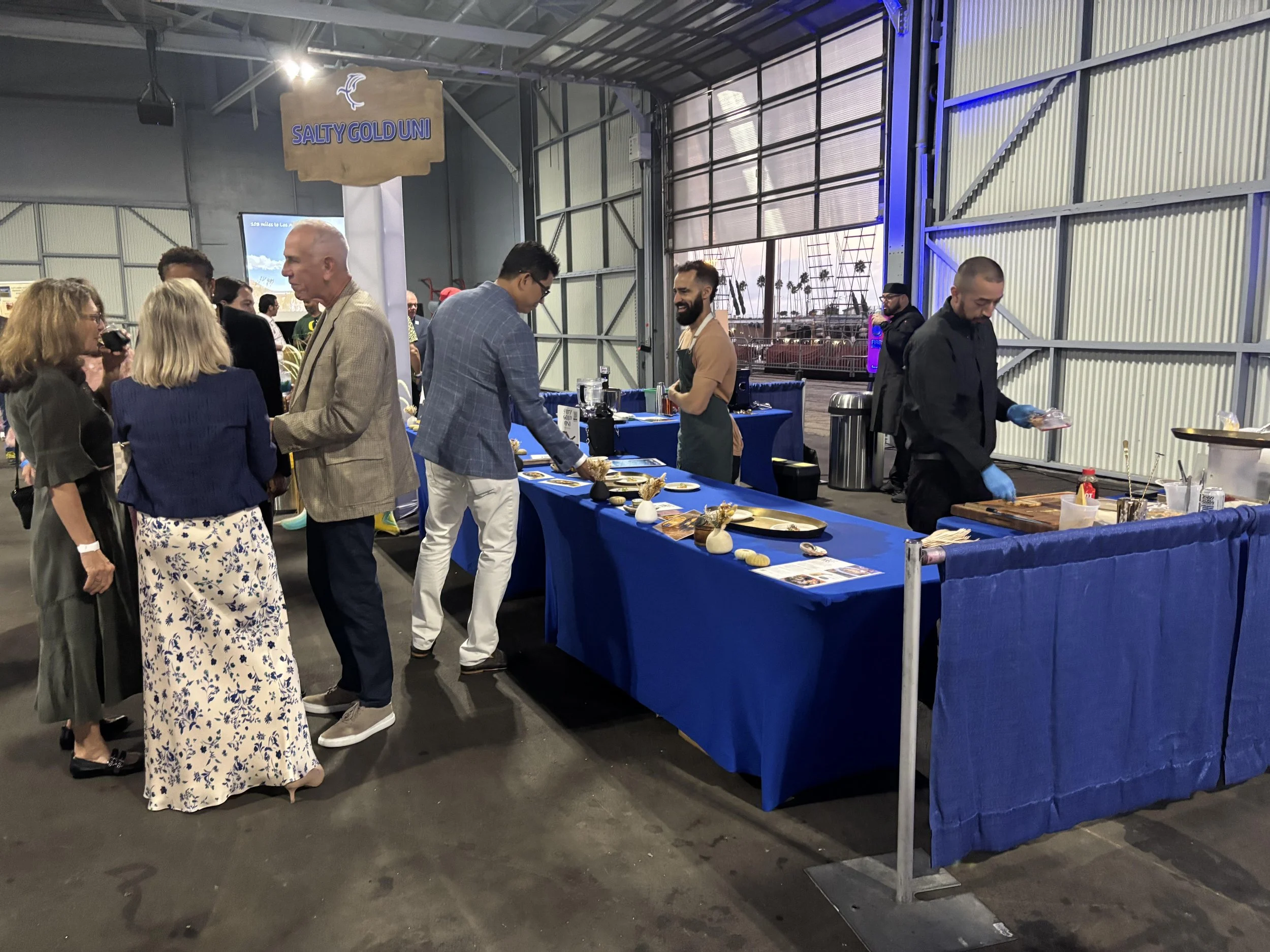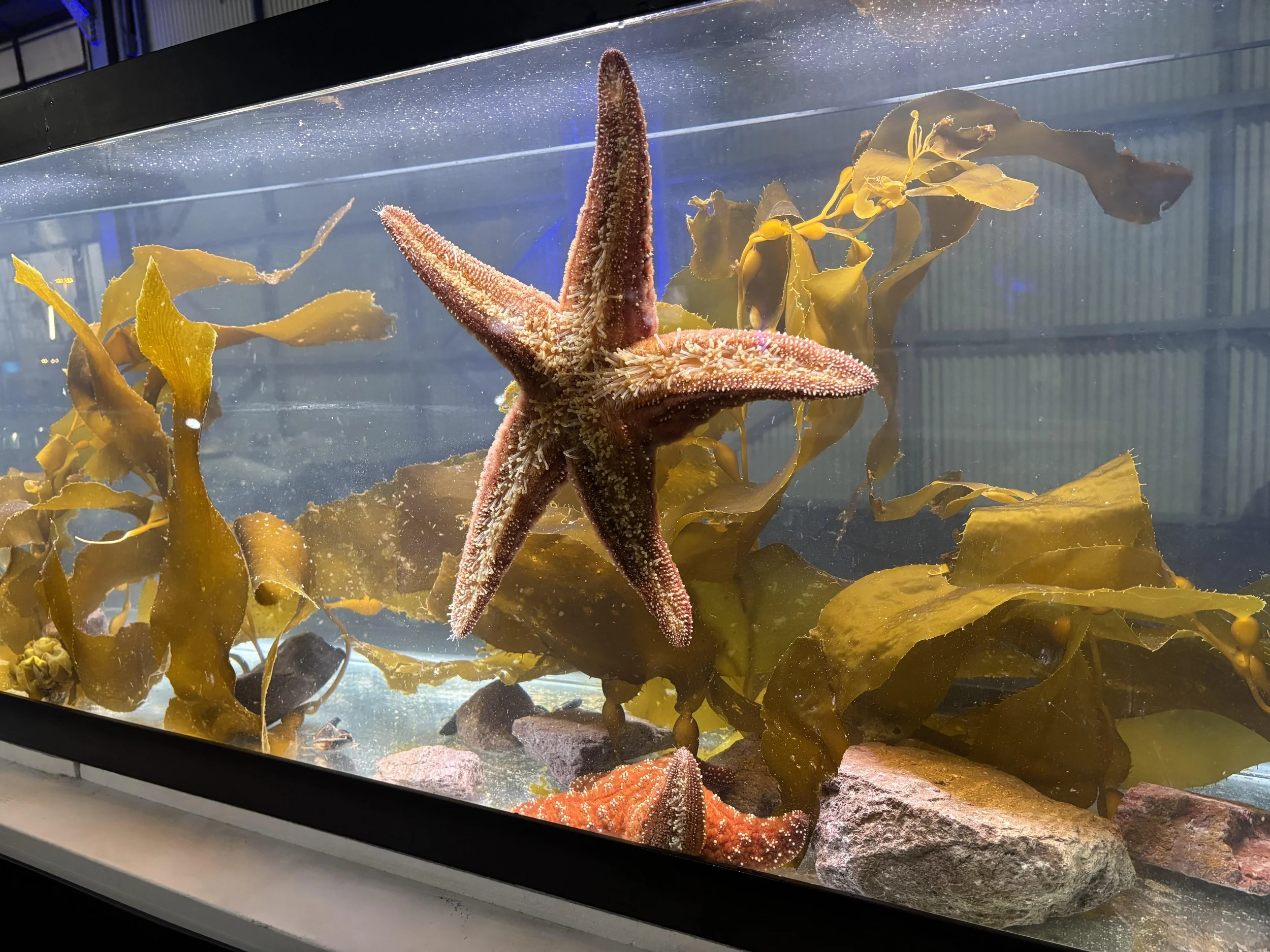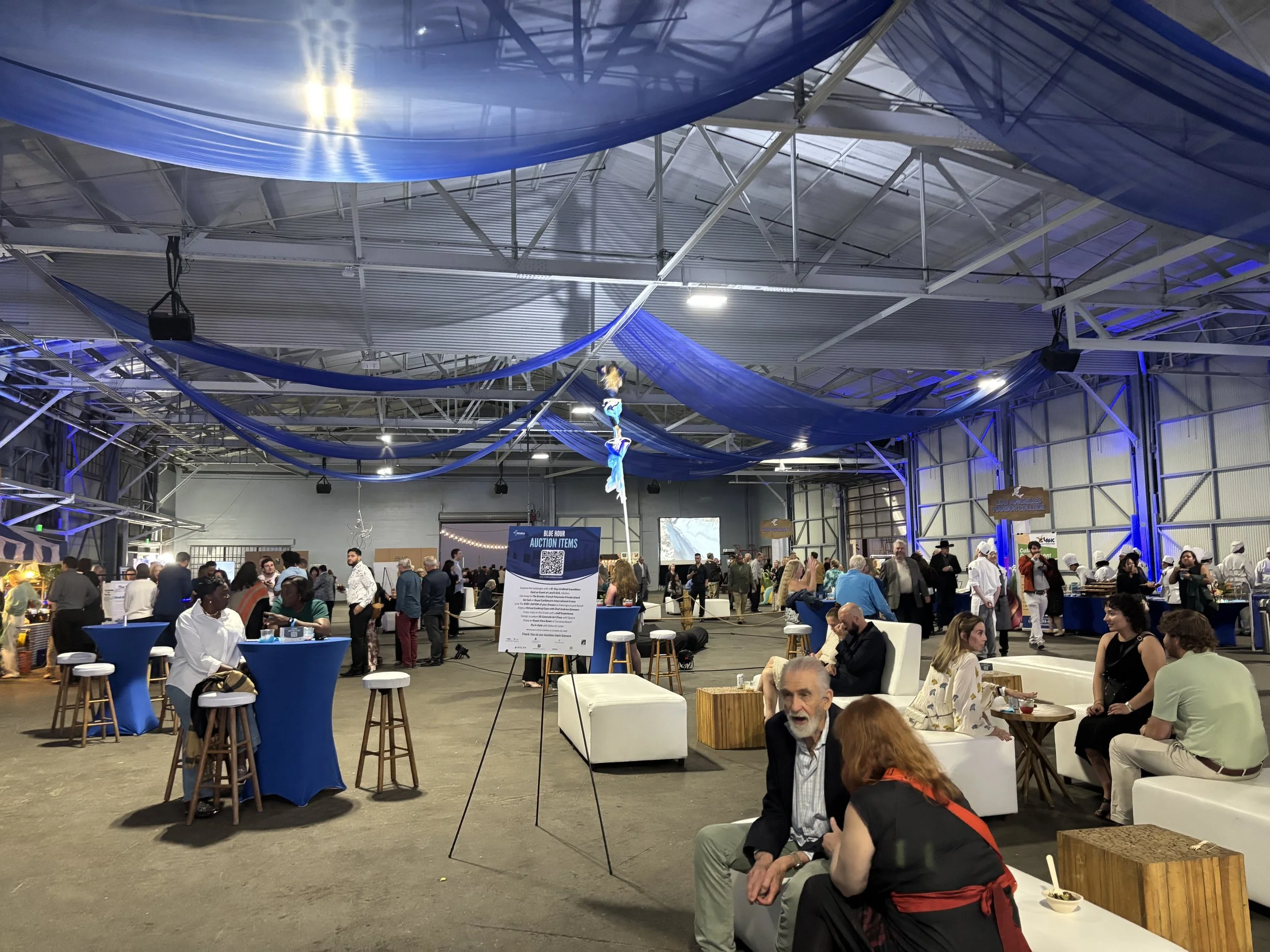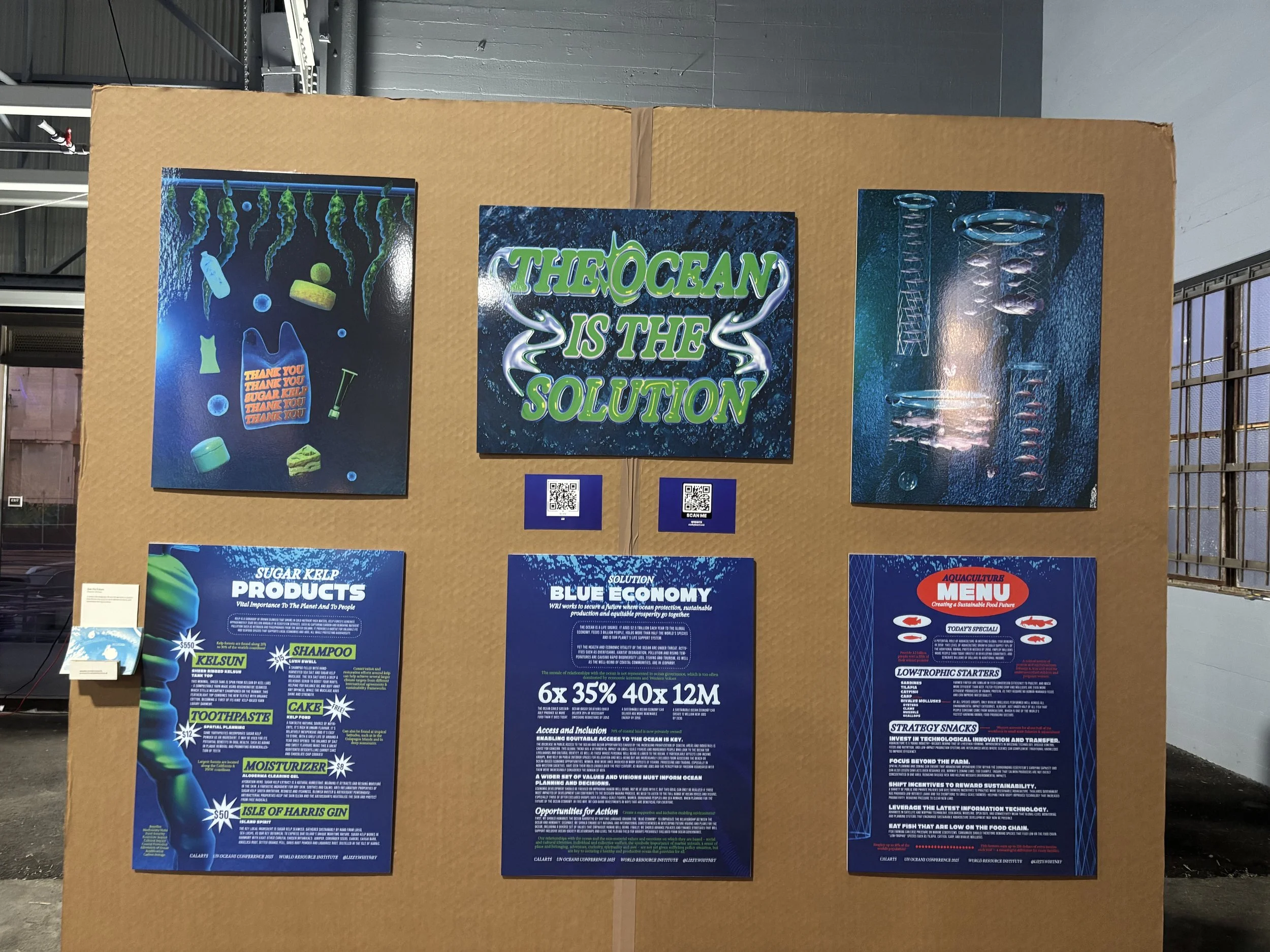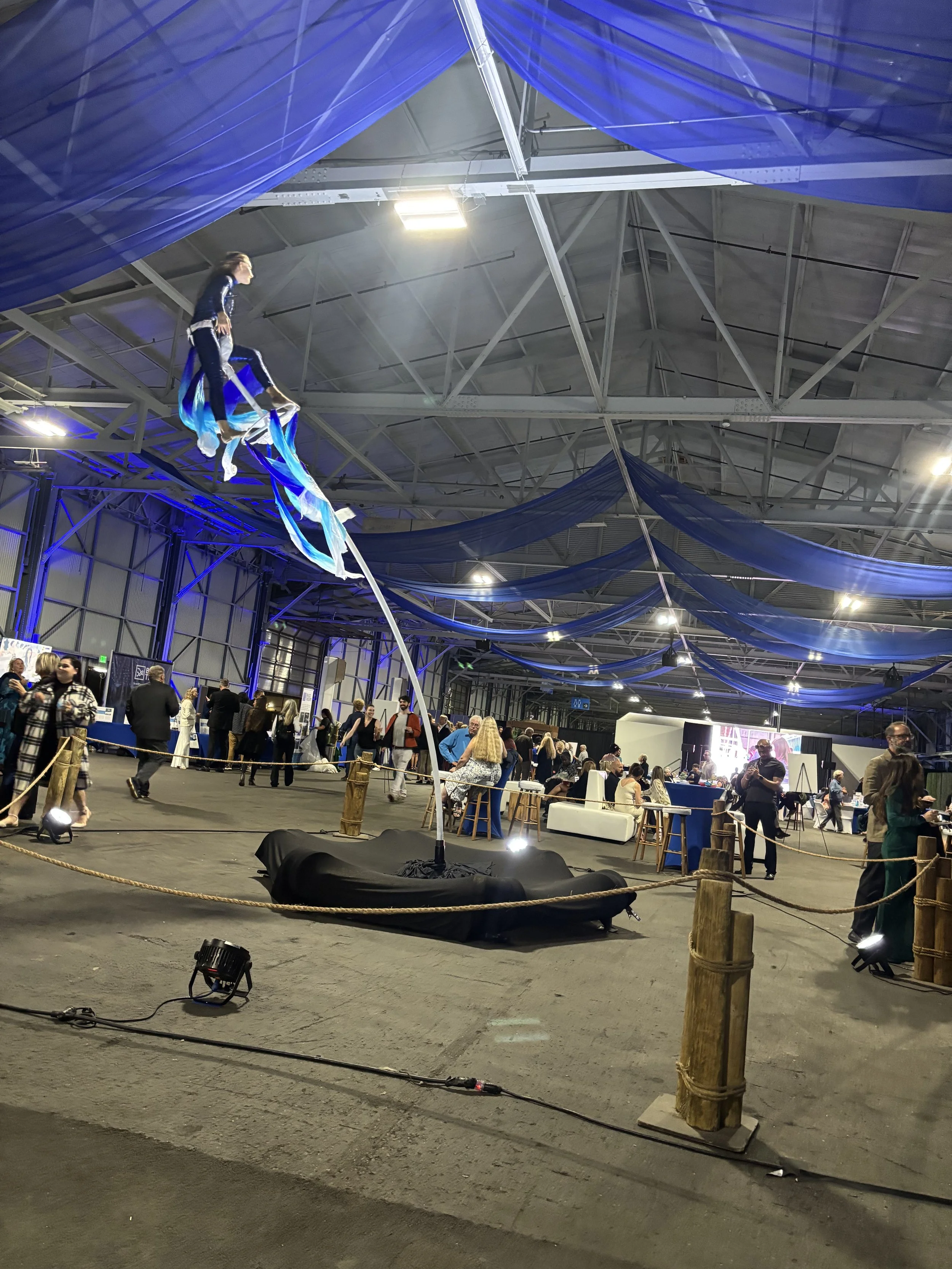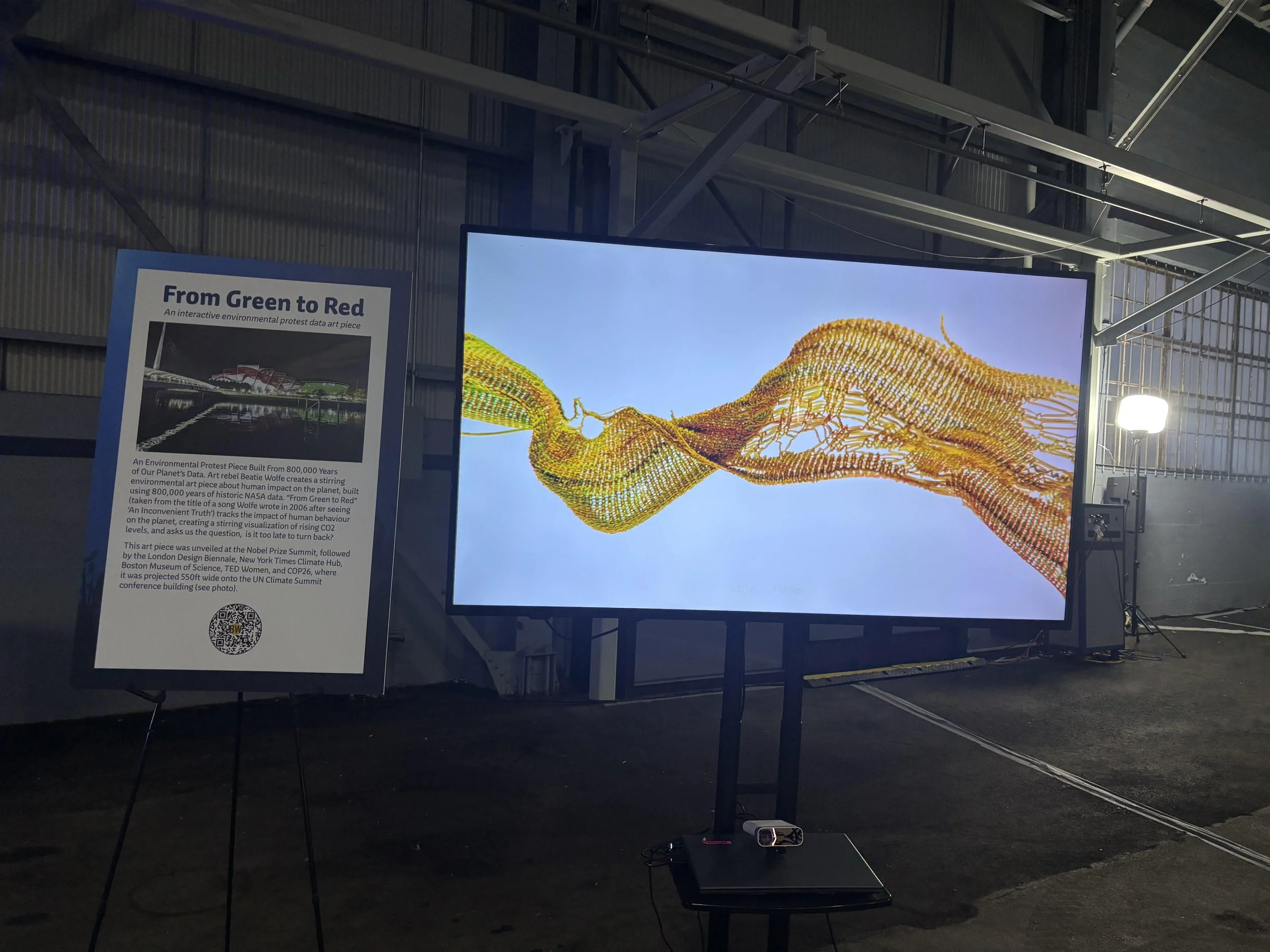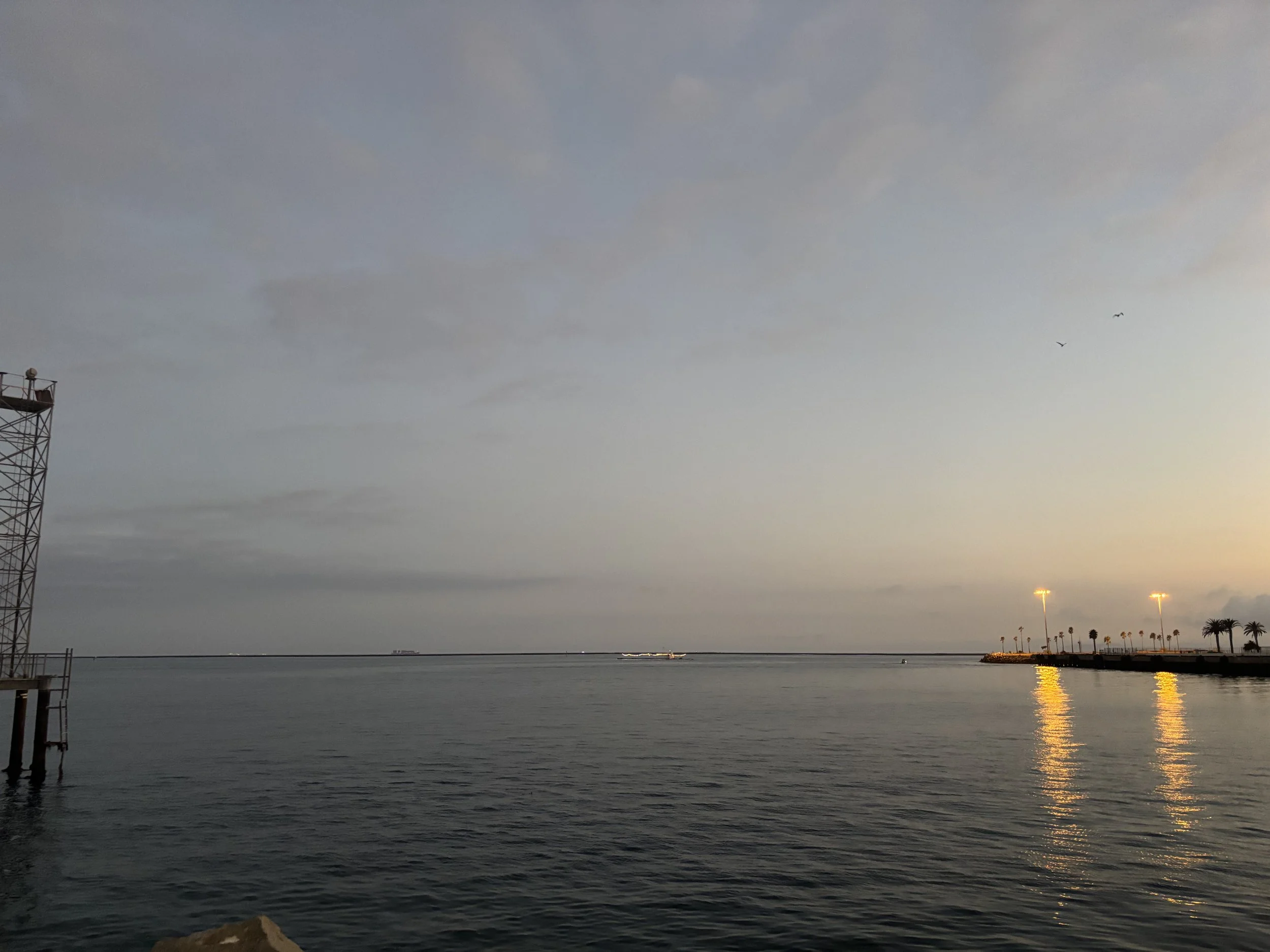This Year’s AltaSea Blue Hour Dishes On Seafood and Sustainability By Writer and Contributor Emily McGinn
At this year’s Blue Hour event set at AltaSea’s campus at the Port of Los Angeles, attendees snacked on tasty treats inspired by the blue economy as they perused the most recent twists in ocean innovation. In honor of this year’s theme “The Culinary Arts of Blue Food,” AltaSea invited local chefs to highlight their finest bite-sized ocean-focused fare at the event.
James Beard and Julia Child Award-winning chef Mary Sue Milliken and local chef Dustin Trani, who opened ocean-to-table concept Trani’s Dockside Station in San Pedro in 2023, were both featured as chefs at the event. Michelin Award-winning chef Sammy Monsour also participated in curating the menu, and celebrity chef and restaurateur Andrew Zimmern received this year’s Innovation Award, recognizing his contributions to the sustainable seafood movement and the blue economy.
From algae-infused cocktails to fresh, locally-farmed oysters, attendees were able to learn more about new ocean technology in tandem with their tastings. Oysters were of particular interest at this event in light of their recent population decline and avid need for restoration. New technology such as the OysterNew system allows for increased mapping of shellfish environments, providing much-needed datasets to seek restoration efforts for oysters.
Other culinary standouts included experimental culinary creations from LA Harbor College students. They offered items like shrimp toast and a unique dessert offering — a traditional French tea cake infused with Gamtae seaweed. The French fusion dessert showcased a resounding theme for the event: displaying how marine elements currently underutilized in the culinary world can pave a way toward a more sustainable approach to dining in the future.
Seaweed and kelp received their own spotlight at the event, with representation on site from local nonprofit Kelp Ark. The nonprofit is on a mission to build a thorough gametophyte bank of kelp species in the Eastern Pacific Ocean, meaning that they are collecting the reproductive cells necessary to create more of the species. Building their collection of kelp gametophytes is becoming increasingly important as the biodiversity of kelp and other seaweeds diminishes in the wild.
Kelp Ark is especially focused on the loss of biodiversity in giant kelps, which has been occurring due to pollution, warming ocean waters, changes in acidity and an uptick in invasive species. “They don’t grow as big and tall so they don’t create those wonderful forests that are habitats, sequester carbon and provide all the benefits you hear about from kelp,” says Hayden Schneider, head of outreach and partnership at Kelp Ark.
Kelp Ark has seeds dating back to the 1980s, which they preserve under red light.
“The idea is that those seeds will be available for research, restoration and farming in the future,” Schneider says. “The possibilities of kelp are up-and-coming. We are still learning a lot about them. [They could be used in] bioplastics, biofertilizers, biofuels, medicines and [as a food source]. There are tons of different applications.”
Blue Robotics also participated in the event, sharing information about cutting-edge ocean technology in the realm of underwater robotics. Water is hard on technology because of salt content, pressure and other challenges. Blue Robotics seeks to overcome these obstacles and make ocean technology more accessible to innovators.
“The best way to think about it is like Legos. There are two different ways to play with Legos. You can either go to the store and we can buy a kit for the space shuttle, and we can follow the instructions and we will build the space shuttle. It might take some time, but the design has already been done for us. Or we can dump all the pieces out on the floor and we can come up with our own design,” says Tyler Buckingham, head of the blue economy strategy and engagement team at Blue Robotics. “What Blue Robotics has done, and what we seek to do, is to foster that creative, accessible space so more and more people can access ocean technology and create with it and solve problems with it. The way you go and look [down there] is with these pieces. So we want everyone to touch this technology.”
Blue Robotic technology could have a wide array of applications, from allowing casual whale watchers to see the kelp forests beneath the water to maintaining an underwater farm with an ocean tractor. The robots also offer vast underwater exploration potential. While divers can only dive so deep, robots can overcome those limitations and reach new depths. This could lead to the discovery of new species, for example.
“The ocean is largely unexplored,” Buckingham says. “Whenever you stick a robot down there and you start looking around, you find you discover new things. The opportunities for discovery are enormous, and when you open the aperture, so more people get to go explore and participate in that spirit of exploration, you ignite something really core. The possibilities are endless.”
Companies like Blue Robotics are paving the way for ocean sustainability and technology start-ups, such as those supported by business accelerator Braid Theory. The accelerator supports budding companies, including coastal water monitoring company Clean Earth Rovers, Primitives — a company that drives kelp reforestation by transforming predatory sea urchins into building materials — and GRoW Oyster Reefs, which aims to revitalize oyster reefs by using reef building substrate products.
From ocean-inspired art and culinary creations to a celebration of the innovation taking place at the Port of Los Angeles and beyond, the concepts at this year’s Blue Hour all unified under the idea that the ocean holds much promise for the future.
“The mysteries are enormous and the mysteries span all subject matters,” Buckingham says. “They span everything from the sciences to the origins of life. They get into anthropology and the history of humans. There are shipwrecks. Think about the Titanic. Think about the stories that we tell ourselves around the ocean space. So unlocking that for humanity, unlocking that creativity and that drive is, honestly, [something] my colleagues and I [are all interested in]. That's why we work here, and that's what drives us to want to make accessible technology.”
Emily McGinn is a journalist based in the Los Angeles area. She enjoys reporting on and writing about a variety of topics from lifestyle to news, especially in her areas of specialty, environmental science and political science.

